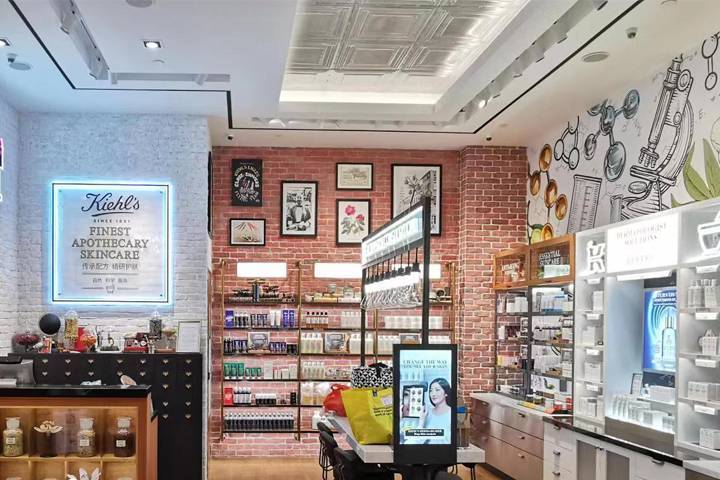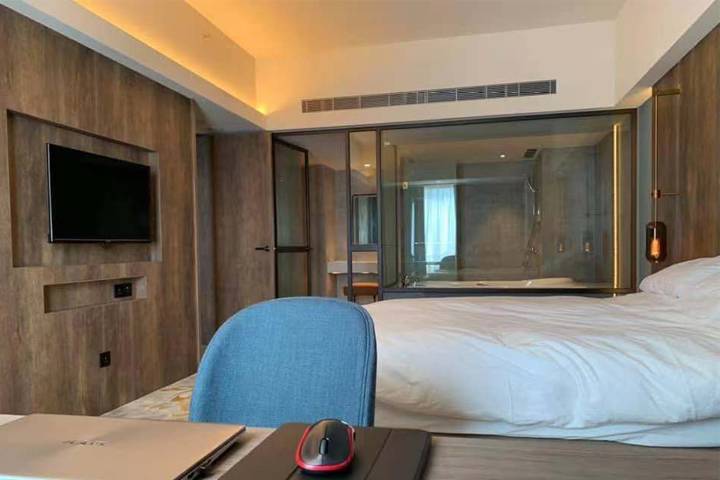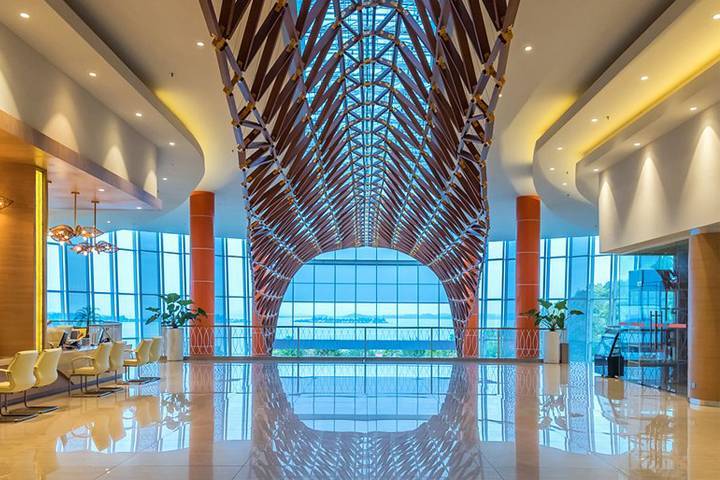Glare is the kind of lighting that makes people uncomfortable, such as too much brightness or too much contrast between light and dark. It is also a common way to avoid glare to choose a reasonable beam angle when choosing a down light or a spotlight. So what is the beam angle?
A. What is the shielding angle?
We have to know the shielding angle first, shielding angle means the angle between horizontal plane and viewing direction underneath which the luminous parts of the lamps are just visible, So the bigger the shielding angle, the stronger the anti-glare function.
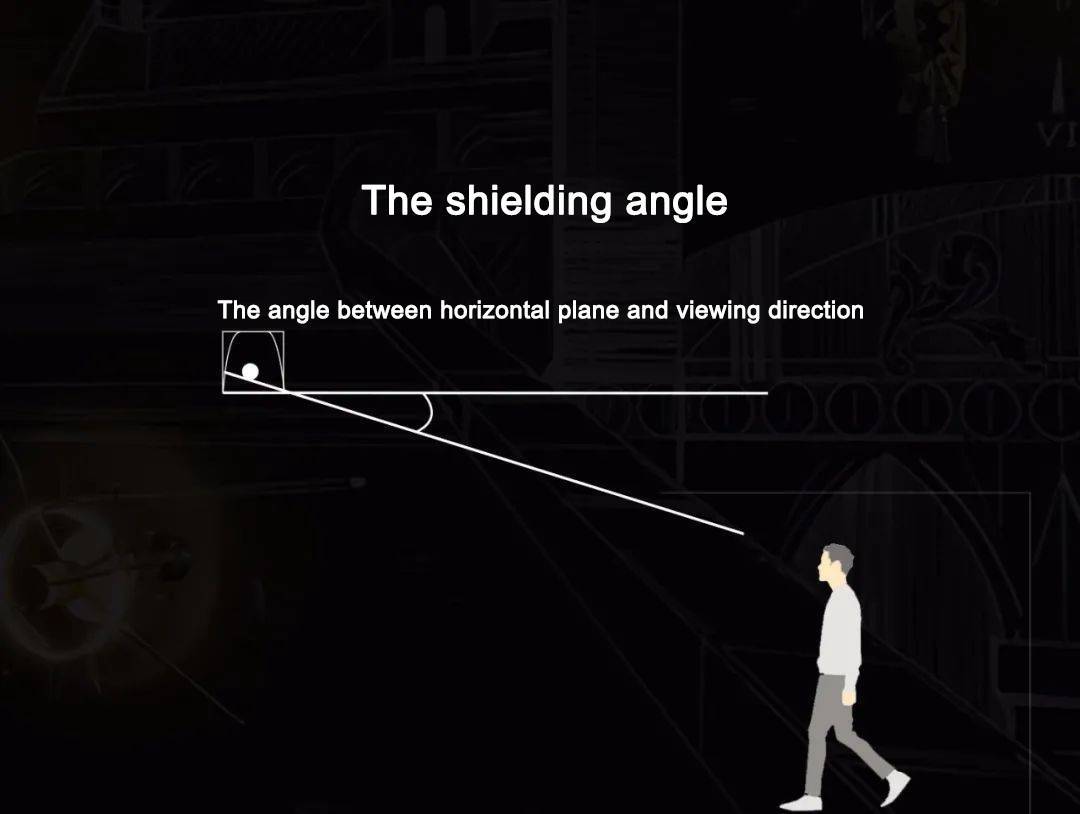
Under normal horizontal viewing conditions, to prevent direct glare from high-brightness sources, the shielding angle is generally greater than 30 degrees, and 45 degrees is considered the most comfortable lighting design.

B. What is the beam angle?
Directly below the light source is usually the brightest, or in scientific terms it has the highest light intensity. The so-called beam angle is the one between the two directions for which the intensity is 50% of the maximum intensity as measured in a plane through the nominal beam centerline.

For the same light source
a large beam angle means a small and soft center spot
a small beam angle means a big and strong center spot.
Generally, the beam angle of downlights is in the range of 10°~60°.
Common ones are 10°, 15°, 24°, 36°, etc.
The beam angle of the ceiling light is about 140°.
24° beam angle is mostly used in home space

Different beam angles create different atmospheres
Narrow beam angle 10-20°
As the center spot is prominent and the spot range is relatively small, it is usually suitable for accent lighting. For example, if you need to illuminate a very delicate ornament or other decorative objects, to create a little gorgeous light, you can choose a narrow beam angle.

Wide beam angle 24°-45°
Can be used for wall washing or local lighting
The light rubs against the wall, down the wall.
It feels like the ceiling is raised, reducing the sense of space occlusion.

For a living room, the focus of the vision is generally concentrated on the coffee table, so above the coffee table we can set up several surface or recessed mounted luminaires with wide beam angle as local lighting.

Ultra-wide beam angle 50-60°
The light from the luminairs to the ground will be more decentralized
Layers of light and dark are not so obvious, which make it suitable for providing ambient lighting.

There is no one beam angle that is the best, only the right one.
Generally speaking, lights with narrow beam angles have better anti-glare functions. However, the illuminated area is less. They can create a good atmosphere, but also a relatively strong contrast of spatial brightness. As for the wide beam angles, due to the relatively decentralized light, they can provide uniform lighting for the space. However, when it comes to atmosphere creating, they may not be suitable.
Therefore, it’s important to select different beam angles according to different spaces.
C. What is a Light Distribution Curve and how to use it?
How big the beam angle should be in a space. There is no uniform standard for this. We can simulate the different ranges of illumination under different beam angles with the help of lighting software. It doesn’t matter if you don’t know the software, lighting manufacturers will provide light distribution curve/diagram for their products. We can choose the beam angle on the basis of the light distribution diagram. Here we provide the light distribution curve of the more commonly used beam angles: 10°,15°,24°,36°.
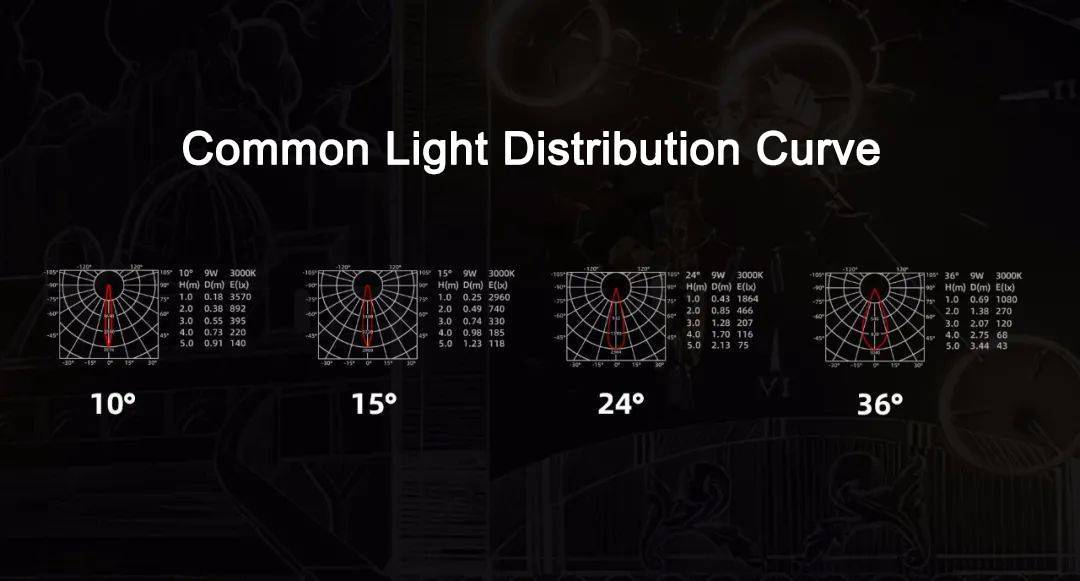
Again, it doesn’t matter if you don’t understand the graphics on the left, mainly refer to the description on the right.
The first line clearly indicates the parameters of the beam angle size, power and color temperature of each luminaire.
The first column below is the illumination distance of the fitting; The second column is the diameter of the corresponding spot at different illumination distances; The third column is the illuminance corresponding to different illumination distances.
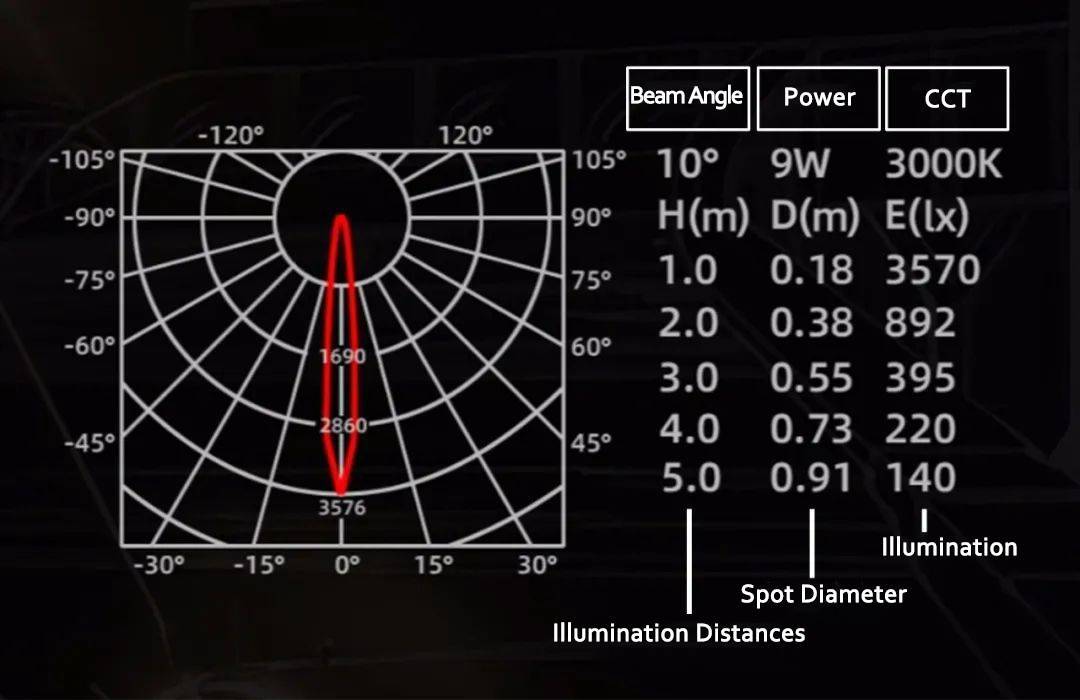
For example, the diameter of the table is 1.5 meters.
If we want the overall light of the desktop to be more uniform and the contrast to be weaker. Let’s take a look at the light distribution curve, 36° beam angle, the spot size is 1.38 meters when the illumination distance is 2 meters. Obviously, this beam angle is more in line with our requirements. Its corresponding illuminance value is also described in the diagram.

What if the diameter of the table is 1 meter?
According to the diagram, you can use 36° or 24°, you need to learn to use it flexibly. If I just want the center of this table to be a little brighter, the other places to be relatively dark, which one should I choose?
Do the math, obviously 10° is more suitable, That is, when used for local lighting or to highlight an object, narrow beam angle lighting is generally adopted.

The size of the luminated area varies with the size of beam angle.
The spatial brightness will be higher within the beam angle.
As for the area outside the beam angle, since there is only indirect lighting, the brightness will be lower.

